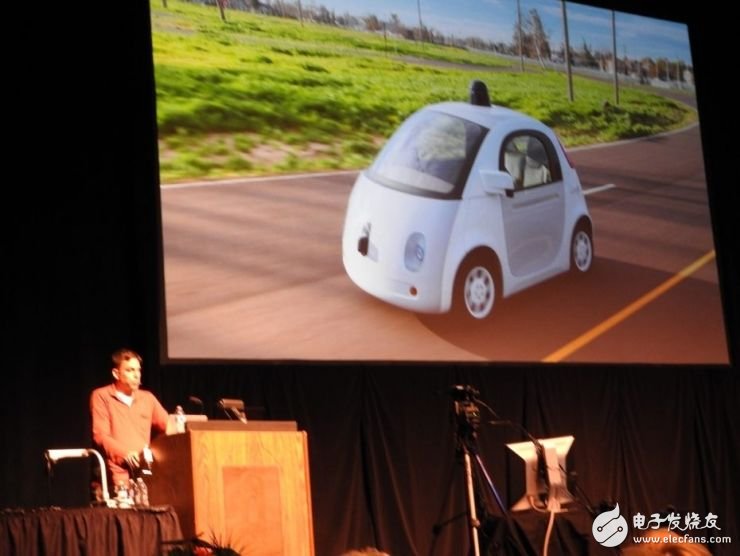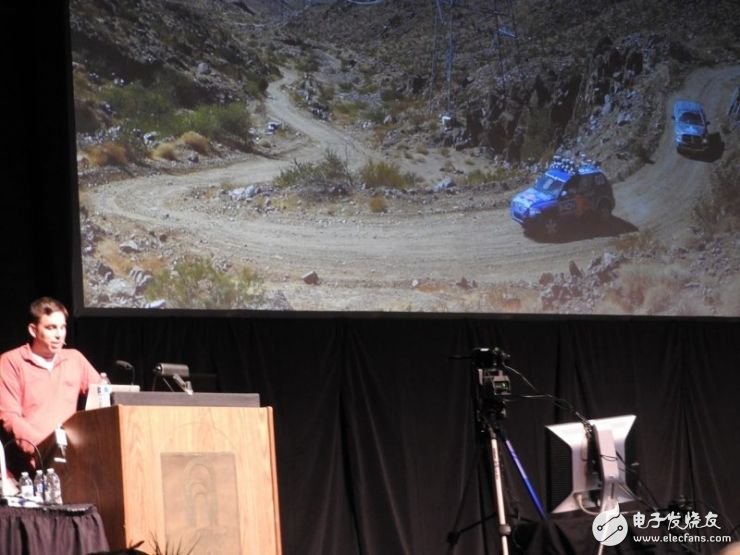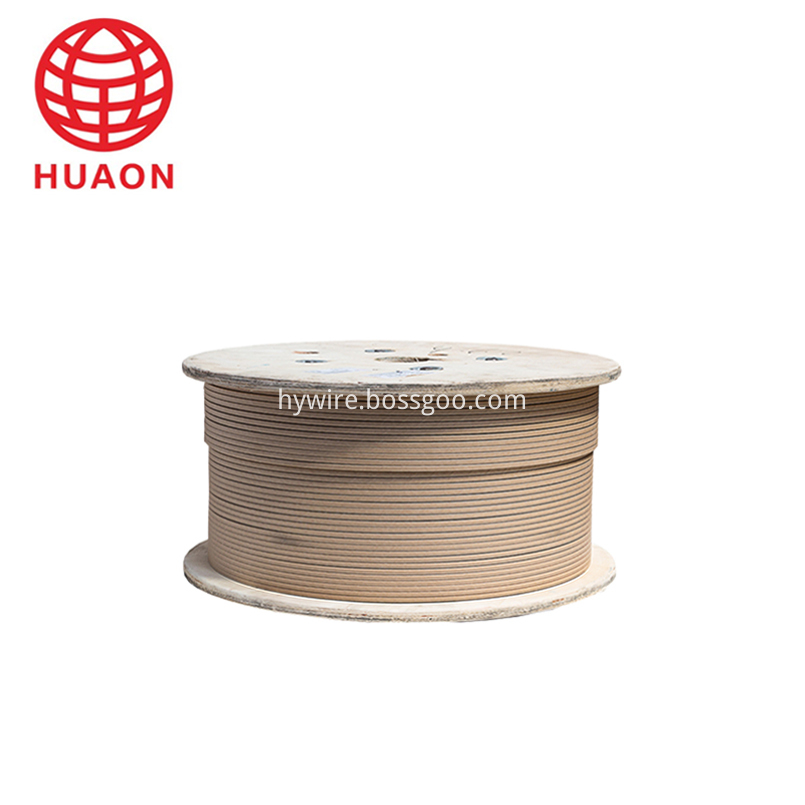Google has always played a leading role in the early days of autonomous vehicles. Automated driving vehicles not only lead the innovation of artificial intelligence and machine vision software, but also promote the advancement of semiconductor chip technology and hardware systems.

Daniel
Rosenband introduces Google's self-driving car at the International High-Performance Microprocessor Symposium (Hot Chips)
However, Google is only one of the many assists in the company that is driving the $330 billion chip industry. Automakers like Tesla, Honda, BMW, Volvo, Mercedes-Benz and Ford are also developing their own self-driving cars. Uber said it will test 100 self-developed self-driving cars in Pittsburgh; GM and Lyft also said they will be testing auto-driving taxis by the end of the year.

Google’s self-driving cars have achieved little success in the DARPA Robotics Challenge
Autopilot is the driving force behind chip development
Kevin Krewell, an analyst at TIrias Research, said that autonomous vehicle technology is a major driver of semiconductor chip development. "Deep learning-based car navigation is different from other high-performance computing jobs, a new way of computing, a framework based on new ways." He said, this is why Intel spent $350 million to acquire artificial intelligence companies. Nervana.
If the semiconductor chip can meet the functional requirements, other supporting systems can also keep up, which will greatly benefit the development of autonomous vehicles. And if the self-driving car has 5% working time per day for the system to rest, the self-driving car will no doubt be safer. Rosenband said that 1.2 million people die each year from car accidents.
“The population of a city is not so much, and the car accident has taken their lives. In the United States alone, 35,000 people die each year in a car accident. This is equivalent to crashing a passenger plane every day. We need to revisit this. problem."
Self-driving cars allow blind people and other physically disabled people to sit in the driver's seat, but to build a self-driving car that can really drive on the road, our technical reserves are still not enough, and the road is long and long. Not long ago, a driver activated the Tesla autopilot function, and the autopilot system failed to find the truck in front of the driver causing the driver to die in a car accident.
Even so, investment companies still consider this a promising and safer technology. Rosenband said, "We can change people's lives."
In order to achieve this goal, we must achieve unprecedented breakthroughs in artificial intelligence and machine vision. Automated driving systems are adequate to deal with a wide range of issues, such as unpredictable traffic conditions, crowded pedestrians and inaccessible bicycles. This has extremely high requirements on the processing power of the system chip, and the final processing of the system can not harm either party.
“When driving on a highway, I suddenly realized that we have to deal with the problem from beginning to end: how can we develop a fully autonomous system?â€
What are the conditions for fully automated driving on the hardware?
In an idealized autonomous driving environment, the system must be able to pick up at a designated location and deliver it safely to its destination. The autopilot prototype developed by Google has no steering wheel and can pass through residential areas at 40km/h or lower. It takes a self-protected driving strategy and waits 1.5 seconds before entering the intersection. In addition, the car can calculate the possibility of danger.

Daniel Rosenband, Google's hardware engineer
The vehicle needs to know its own location, its surroundings, what the surrounding objects are doing, and how the vehicle should move. To meet these requirements requires a large amount of map data and sensors. In order to get a 360-degree view around the vehicle, Google uses the Lidar radar system, which scans the surrounding environment 360 degrees to generate a 3D model of the vehicle's surroundings. The model shows the distance of different objects and their speed.
According to Rosenband, Google’s next-generation prototype will be four times more computing power than the 2015 prototype. It will be equipped with a multi-purpose chip or a custom chip that can handle the problem of self-driving cars. On this 100mm2 chip, it is necessary to perform 50 trillion operations per second.
"This is a very large number. Now the computing power of the chip has changed dramatically from a decade ago. And all this thanks to this group of like-minded programmers."
In response to this challenge, Nvidia said it has developed a new chip for autonomous vehicles, dubbed Parker, which is part of the Auto PX 2 supercomputer. Intel also claims that its Xeon Phi chip family is also sufficient to handle artificial intelligence issues.
Rosenband said that we still have a lot of problems to solve. For example, sometimes at sunrise or sunset, the human eye can't distinguish traffic lights, and it is more difficult for the computer to decode the image too high or too low, and the vehicle is still moving.
“What kind of environment is the chip suitable for? We need to use a few gigahertz radar bands to perform a lot of digital signal processing to reduce noise interference and reduce the distortion of the radar system. We also use the best silicon material to play. Its maximum performance," Rosenband said.
In the future, Google will most likely need the system to provide the equivalent of a data center on a mobile device. It requires the best computing performance without consuming too much power, and the vehicle can read the data directly in the data center for calculation.
Why has to be this way? Google’s self-driving car is driving 3.2 million kilometers, but still can’t predict everything that happens in the world. Chris Rowan, a chip expert and head of Cadence Design Systems, said that Google may need to test 1.6 billion kilometers, and its system may include everything that might happen.
Via venturebeat
Paper Covered Flat Copper Wire
| About Paper Covered Flat Copper Wire |
Wrapping materials: Power Cable Paper, High Density Insulation Paper, heat-resistant insulating paper, clupak paper, Nomex 410, all kinds of self-adhesive paper and other special insulation materials
As per Conductor Material:Copper , aluminum
As per Inner Conductor: Paper wrapped bare
Insulation thickness:Double paper covered (DPC) orTriple Paper Covered (TPC) ,According to Customer`s requirements

Conductor of Paper wrapped wire
Bare Wire Round Wire:Φ1.00mm-Φ5.00mm
Rectangular Wire thickness a:1.00mm-5.60mm
Width b:2.00mm-16.00mm
Conductor of Composite wires
Max wrapping layers once: 24 layers for Paper Covered Wire
4 layers per wire and 16 layers outside for composite wires
We could offer products of special requirements on conductor size, insulation layer thickness, or wire number of the composite.
Aluminum Enameled Wires,Paper Covered Flat Copper Wire,Cable Paper Covered Insulated,Paper Covered Insulated Wire
HENAN HUAYANG ELECTRICAL TECHNOLOGY GROUP CO.,LTD , https://www.huaonwire.com
